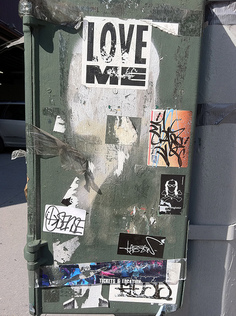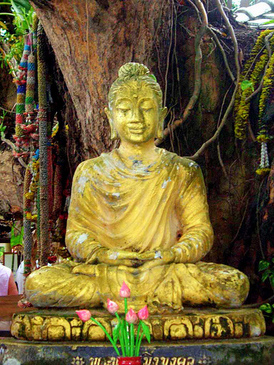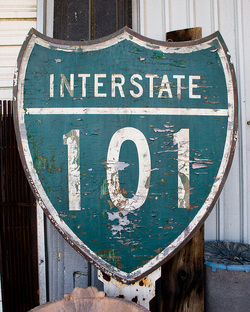 Governor Rick Perry/Ed Shipul I love the expression “heightened neurosis” and wish I had made it up, but I heard it from Pema Chodron in a talk called “Troublemakers” that she gave in 2006 at the Omega Institute. Her point is that we need the people who irritate us to heighten our neuroses. These annoying folks make us see and feel the inmost unloving aspects of our own nature. This is where we still have work to do. Texas Governor Rick Perry represents one kind of annoying person, the kind I completely disagree with, but Perry’s path and mine will never cross. My wellbeing depends on his not becoming a mover and shaker in my world, and I think that outcome has already been settled. He is easier to deal with than the actual troublemakers I bump up against day to day. Applying Pema’s enlightened approach to people who get on my nerves pleases me. After all, having had a full lifetime of being annoyed, I am an expert at knowing annoyance when I feel it, but not yet so wise as to look at my own reactions as a source of information about me. I do not yet translate being irked as a sign of where I can be hijacked from equanimity. Rather, I jump straight to judging the other and then criticizing myself for judging. I find my world peopled with those who, regardless of their intentions, point out to me where my own neurosis is intense. Pema would say I am lucky, that this is a good thing. She says that Vajrayana Buddhist teachers will sometimes be deliberately mean or prodding so as to awaken their students to their blindspots. So when anyone utters inanities, comes across as a name-dropper, an expert too full of themselves, wears super strong perfume, sits in front of me in a theater twitching and bobbing, I have the option of feeling gratitude. And I still get to be annoyed. That’s the beauty of nonduality. I am beginning to recognize when someone well meaning tells me what to do or a friend fails to see the world as I am seeing it, I don’t easily open my heart or my mind to this personal troublemaker. The negative feelings that arise and my attempts to comfort myself and cover my animosity confuse me. Then confusion lies like a cloud between us. As I write this I am having an “aha moment.” Actually, I have improved quite a bit. I utter far fewer unkind words and more often suffer my disapproval in silence. And now, not only do I have my public self doing better, but my inner self is quicker to recognize and to admit that the negativity I am feeling is a form of suffering. And I don’t want to suffer. I’m betting that Pema is right; being provoked is part of the path that must be taken to identify those parts of being me that cause suffering. This knowing may not be fun, but it must be done. In the name of freedom, bring on the troublemakers.
 The feelings back/underdestruction “Who do you think you are” can issue like a challenge when the asking voice sounds angry or affronted. Otherwise the question could just be an inquiry that awareness wants to ask the self. Kind of like checking in before getting down to business. I suppose there are ways in which the question is simply rehashing history, like thumbing through a file cabinet of folders labeled such things as retired high school teacher, mother of three sons, grandmother to three, most recently, a four-going-on-five year old girl. Possibly I can label myself a meditator if I keep sitting still. It’s an admirable identity, but right now more wishful than accurate. I am a Unitarian Universalist at 1187 Franklin in San Francisco. And oh, look, I see I am a person who is carrying a grudge. I don’t like to be limited by identity labels; I want them to peel off easily. Perhaps not the ones like I had sons when I was young, and some of them had kids. Or the fact that I did hold a job in the Los Angeles Unified School District (I have former students as friends on Facebook to prove that I was there). But grudge-holder is not a label I like. Not that I don’t think I’m entitled to my ire. Yet it’s my hope that this label, with a little work, can be peeled away. Why would I be attached to a feeling that causes suffering and can’t be doing anyone else any good? Truth be told, holding this grudge borders on pleasure. There’s a reassuring sense of self involved in revisiting hurt feelings, as if this particular core wound of mine requires an occasional prodding to remind me of who I think I am. At the heart is self-esteem. I have it, but it appears to be attached to getting plenty of positive feedback, and when someone doesn’t respect who I think I am, my feelings get hurt. Continuing to hold a grudge reminds me that I value myself and that someone in my orbit doesn’t know who I think I am. This wanting to have worth recognized seems important enough to apply to all beings. As I move among others, I want to validate for them their worth. I want to take the time, be present, so as to discover how and where they are holding their worth. And, above all, I want them to know that I recognize their value. It takes some care to even partially discover the multifaceted reality that is a human being. And I hold a grudge because a person who should know better (my label) didn’t have the perspicacity to discover the me whom they labeled “Doesn’t matter.” Okay, so compassion is an option. I could wear this identity label more lightly and be willing to loosen it so as to avoid a lot of insecurity, fear, and suffering. Yes, letting go. That’s a wise practice. Martha Beck in a CNN blog posted April 25, 2008 gives good advice on how to let go. She says, “Be still. The process of releasing your labels without losing yourself begins in stillness. If we hold still long enough, we begin to feel what we really feel and to know what we really know - a prospect so terrifying that some people bolt rather than face it. If you can do this - get used to sitting still until you feel what you feel and know what you know - your labels will start peeling away like onion skins.” What makes it difficult for me to peel away the grudge label is, as I said, the discomfort of forfeiting a reassuringly familiar sense of self, a core identity as a person hungry for approval. Doesn’t make me proud, but I am used to being that person. An even bigger question then becomes who do I think I am if I am not the person I always thought I was. But Beck promises a pretty big pay off: “Eventually, you will begin to sense a very deep self that defies all labels, a calm soul who has experienced your whole life. . .without ever being dominated or extinguished. This is the you who wears your labels, who can toss the ones you've outgrown [or that never fit in the first place], who will always find another identity to wear when a familiar one disappears.” Learning to peel away my labels is on-going. “You are what you learn” is Dilbert creator Scott Adams’ answer to the Who Are You question. And that, to my mind means paying attention to the lessons life presents. He says there's almost nothing you can't learn your way out of. I read that as an opportunity; if I don't like who I am, I have the option of learning to hold my identity more loosely and with greater compassion. “Life is like a jail with an unlocked, heavy door. You're free the minute you realize the door will open if you simply lean into it,” he says. Meanwhile there’s a grudge waiting, a heavy door to be pushed open, a label to be loosened.
 Kunaram Temple, Koh Samui, Thailand/clayirving The New York Times calls A.Word.A.Day edited by Anu Garg “The most welcomed, most enduring piece of daily mass e-mail in cyberspace.” I subscribe. It is free and at the bottom of the email is “A Thought for Today,” a mini-treasure of unsolicited wisdom.
One day this week Lao-Tzu, philosopher (6th century BCE) told me: “Every human being's essential nature is perfect and faultless, but after years of immersion in the world we easily forget our roots and take on a counterfeit nature.” Lao-Tsu’s lofty thought dovetailed neatly with the answer I gave my friend at coffee one morning when she asked me what I was getting out of practicing meditation.
The night before we met for coffee, we were part of a midweek meditation circle that meets in the chapel at the Unitarian Universalist church. Like everyone else there, I was asked to talk about my meditation practice. I think I sounded serious about it as compared to the stop and start nature of other reported practices. Not that I compare. I actually felt somewhat apologetic about sitting almost everyday, about wanting to secure a meditation instructor, and that mudras makes me feel peaceful and proper.
For me, a mudra is a reminder to be aware whether moving and sitting among others or being completely solitary. As I have learned it, mudras are bodily postures or symbolic gestures that help to bring about a connection between the sitter and the Buddha as seen in pictures or statues doing a practice.
A meaningful mudra in my practice is the Dhyani Mudra, a gesture with the back of the right hand resting on the palm of the other so the tips of the thumbs lightly touch one another as the hands rest in the lap. The right hand, resting on top, symbolizes an enlightened state; the other hand, resting below, the world of appearance. I can see in it Lao-Tsu’s vision of both parts of the self, “the perfect faultless essential nature” and the “counterfeit nature”.
All this Lao-Tsu stuff is hard to paraphrase, so at the table over coffee, I diagrammed for my friend who has more of an intention to meditate than a practice, how it looked to me that meditation worked. In my journal I drew a blacked-in crescent moon that I labeled constricted or small sense of self and then I completed the moon-shape, leaving this part of the circle empty to represent the silent, spacious, luminous self. This is the “perfect and faultless” part of myself that becomes accessible through sitting still and letting be.
Lao-Tsu might say the sloppy blacked-in crescent was the “counterfeit nature” that I constructed to serve me in the world of appearance. And I would add that the blacked in part is all I thought I was and the fixing I paid for in therapy was either to erase the mess or improve upon it. In short, make me different than I am.
Meditating lets me experience myself as awareness; sometimes a thought flits across that awareness, sometimes a familiar dreadful pain or panic lands with a thud and threatens to upset the settled self, but breathing into it, welcoming it into the silence loosens my identification with those blacked in parts. I don’t want to turn against the constricted me represented by the blacked-in crescent. Acceptance of this imperfect self will let me continue to be imperfect, but to accept my small self with more equanimity.
This may sound very self-involved, but I have learned that meditation practice intends to improve the welfare of all beings as it teaches those who sit to be kinder, listen better, be more generous and cause less harm.
These lines from poet May Sarton’s poem “Now I Become Myself” describe what it feels like to me to meditate.
“Now there is time and Time is young.
O, in this single hour I live
All of myself and do not move.”
Truthfully, I am not yet up to sitting one hour without a break and my “counterfeit nature” sometimes takes up more than a little space in the full circle of my being.
 No Interstate I've Seen / Orin Zebest Buddhist meditation is a way to reveal the self to the self and to quiet the mind so that we can get out of our own way for the benefit of all beings. With practice, I am less at the mercy of my amygdala* when I am irritated, slighted, overlooked, disregarded or kept waiting, all of which can happen when visiting family.
As I drove north on the 101 after visiting my son and granddaughter, reality forced me once more to reconsider of my familiar family stories and the way I imagine my three sons think and feel. Many of my stories about the mother I was are not corroborated by my sons. They seem to remember differently or not at all. Furthermore, everyone has changed, outgrowing the stories; everyone’s life has become more complicated.
I was especially aware of the paucity of useful information in stories about my youngest son after spending the week with him and my four-year-old granddaughter. He is a do-it-alone dad now. Out of respect for his privacy, I have not talked about the accidental death of my daughter-in-law last November. Of course, my son and Miss E are never far from my thoughts, but I discovered that compared to the reality of their routine, the stories I tell myself about them are out of touch with who each of them is as they form this new life without a wife and a mother.
My visit last week did not, as I had hoped, make life easier for my son. Thus when I left Friday morning before either he or Miss E awoke, I was grateful for the practices of equanimity and loving-kindness that helped me handle my sadness throughout my visit. I knew Friday would be less complicated for him, and Miss E would be less distracted and more comfortable in their routine.
I do not feel less loved because my leaving was so welcome. Of course, I continue to love this son unconditionally, even though the depth of his grief, the heat of his anger, and the heaviness of being charged with responsibility for his child’s life have eclipsed the easy-going thoughtful youngest son of my stories.
As I said, practicing equanimity was a big part of my visit. Gil Fronsdal of the Insight Meditation Center in Redwood City, explains that the most common Pali word translated as equanimity is upekkha, meaning to look over. It refers to the equanimity that arises from the power of observation, the ability to see without being caught by what we see. This does not mean that I was unaffected by the confusion and disruption that seemed to characterize my visit.
He says, “Upekkha can also refer to the ease that comes from seeing a bigger picture. Colloquially, in India the word was sometimes used to mean ‘to see with patience.’ This form of equanimity is sometimes compared to grandmotherly love. The grandmother clearly loves her grandchildren but, thanks to her experience with her own children, is less likely to be caught up in the drama of her grandchildren’s lives.”
Once back in San Francisco, I could call my son and compliment him on his equanimity in the face of four-year-old tantrums and meltdowns. I know parenting is difficult even under the best of circumstances.
When I was in the park playing dinosaurs with Miss E, she decreed that I would eat a pine cone, and when I demurred, she hurled invectives at me and said I could never visit her house again. That moment reminded me of how in my own long-ago upbringing, my childish anger would have elicited reciprocal rage and there would have been an emotional price to pay. I am grateful that all of us who love Miss E allow her the space to express her feelings, and when she does have to take a time-out, I notice that my son tells time faster than the clock ticks it off.
As well as relying on equanimity, I often turned to metta, a term meaning loving-kindness, friendliness, goodwill, and benevolence. It is a strong wish for the welfare and happiness of others. Through metta one refuses to be offensive and renounces bitterness, resentment and animosity of every kind.
And as I waited for my son to come back from an errand he assured me would take five minutes, but which in fact took 45, I reminded myself as I did a walking meditation on the quiet block where he lives that metta is the protective and immensely patient attitude of a mother who forbears all difficulties for the sake of her child and protects him despite misbehavior…or tardiness.
May you be happy.
May you be free from stress and pain.
May you be free from animosity, free from trouble.
May you be free from oppression.
May you look after yourself with ease.
And I alternated with “May I be happy” and interspersed, “May all beings be happy.”
* “Amygdala hijack” is a term coined by David Goleman in his 1996 book Emotional Intelligence: Why it Can Matter More Than IQ. The term describes immediate and overwhelming emotional responses more extreme than the actual emotional threat warrants.
 Fourth of July Fireworks/crazyk8e1 Celebrating the 4th of July is my excuse to link freedom to the practice of meditation, part of the Bodhisattva path. Getting free is not just an event in the past to be celebrated, nor is it only a future goal. It is not an escape from a situation, or “from” anything at all, but is within right now. Which is not to say that freeing up is easy although, paradoxically, it isn’t hard. In fact it isn’t anything. It’s meditation: sitting still in one’s own spacious skies. Looked at through the lens of my new Buddhist practice, familiar quotes take on a new or differently nuanced meaning for me. “ Freedom's just another word for nothing left to lose.” That is Janis Joplin belting it out in “Me and Bobby McGee” her husky cry of pain is for how we suffer until finally we realize there really is “nothing left to lose.” This says to me that personal pain (Buddha calls it suffering) is the doorway to awakening through which we must go. “Freedom is what you do with what’s been done to you.” Jean Paul Sartre being existential. Sartre accepts that damage has been done, or will be done. It is inevitable. That being so, what next? “I know but one freedom and that is the freedom of the mind.” Antoine de Saint-Exupery wrote The Little Prince, which has at its heart the notion that an innocent, personal perspective on the universe proves to be more serious than a jaded second-hand perspective. Saint-Exupery places problems where they mostly are, in our minds and perspectives. Shift perspective, things change, we change. The Buddha calls serious commitment to a perspective that leads to awakening, “intention.” “Freedom doesn’t mean the absence of restrictions. It means possessing unshakable conviction in your choices in the face of an obstacle.” – Mahatma Gandhi, who also said, “Freedom is not worth having if it does not include the freedom to make mistakes.” Gandhi knows that freedom and discipline are not opposites. The act of sitting still and being present to one’s experiences can be unpleasant or pleasant. Either way, sitting still is a discipline. “Free at last, free at last, thank God Almighty, We are free at last.” -Martin Luther King, Jr. speaking the words of a Negro Spiritual in his “I Have a Dream” speech. Dr. King reminds me that we are all in this together and no matter how private my meditative practice, its purpose is more than personal freedom. It is about everyone’s well being. As for freedom for those on a spiritual path, I like what Jackie Vecchio says in “Four Simple Steps to Freedom.” I recommend her blog at tiny Buddha. Here’s a summary of those four simple steps. 1. Don’t take anything personally.
2. Don’t be a victim.
3. Be gentle, kind, and compassionate with yourself.
4. Practice forgiveness. She says, “Nothing anybody says or does to you has anything to do with you.” People’s opinions are solely the product of their own lives and realities. “Hear what they say, accept that it is a reflection of their world and poof. See the thought disappear.” I’m not very good at this yet. As for Jackie’s second point about not getting caught in the victim trap, I check with my body and as a result generally downgrade disaster to unpleasantness, unless it is truly a disaster and in that case the body will say so. Here is where equanimity is useful. Allowing myself to experience something or someone as unpleasant is sometimes enough to forestall the stories that make unpleasant a more serious source of pain and turn me into a victim. The step to freedom Jackie lists as third is becoming kind to oneself. That was my first step and it was not easy for me. My inner guides tended to yell and say nasty things. They called me names that my four-year-old granddaughter delights in telling me are on the “no-say” list: words like “stupid,” “dumb,” “ugly,” “mean,” and “lazy.” Very early in my Budddhist practice, even before I sat in brief pockets of silence, I listened to Tara Brach’s gentle, modulated voice leading podcasters in guided meditations. Her kind reminders to call ourselves back from thought was a far cry from my own heavy handed corrections to my mind when it wandered. I liked Tara’s voice and wanted to talk to myself like that. Jackie suggests shifting hurtful thoughts to ones that are more loving and kind, replacing each negative with a positive. “Eventually you will start believing them. Doing so allows you to have the freedom to just be you,” she says. I had always considered that “being me” was the problem. As for the last of Jackie’s steps: Forgiveness. Forgiveness is letting go of the hope that the past can be changed. Forgiveness isn’t about saying that whatever happened was okay, right, or just, but about letting it go. Forgiving releases the power the past holds. Of course, things cannot be different and wishing for a different outcome is useless, painful and power-sapping. Because the present is the only time that exists, to forgive is to be in it. It is the only place we have the power to live free and happy. And so, as the 4th of July approaches and the country commemorates independence that began in revolution, I think of the centering that’s required to revolve and to evolve. For me this means sitting still for “spacious skies” of my own. Feeling my own ample waves of grief. Then I can make the world a better place—an act from love rooted in compassion.
|





 RSS Feed
RSS Feed